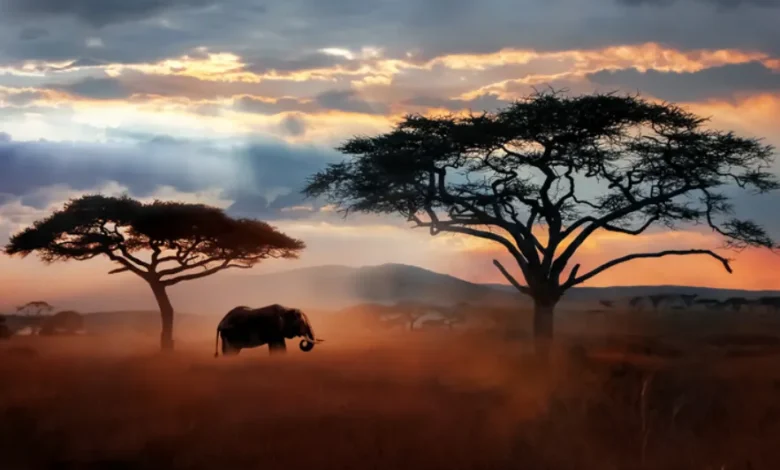Adapting to Change: How Climate Change is Reshaping Wildlife Rehabilitation

As the planet warms, the impacts of climate change on natural habitats are becoming more apparent and more severe, posing significant challenges to wildlife populations worldwide. Alterations in weather patterns, the frequency of extreme weather events, and shifting ecosystems are not only affecting the behaviors and migration patterns of wildlife but are also reshaping the field of wildlife rehabilitation. Rehabilitation efforts are now forced to adapt as the very survival of numerous species hangs in the balance, requiring a deeper understanding and new strategies to effectively support these animals in a changing world.
For those involved in or interested in supporting wildlife rehabilitation, courses4me online courses provide valuable insights and training. These courses offer up-to-date knowledge on how climate change is impacting wildlife and how rehabilitation strategies are evolving in response. Learning from these courses can empower individuals and organizations to develop and implement effective conservation practices that address the new challenges presented by a warming planet.
Contents
The Effects of Climate Change on Wildlife
Climate change is drastically impacting wildlife around the globe, prompting shifts in habitats, behaviors, and overall health. Here’s a deeper exploration of how these changes are affecting various species:
- Shifts in Habitats and Migration: Rising temperatures and altered precipitation patterns are transforming natural habitats, pushing many species to migrate to cooler areas or different elevations where conditions are more stable. This shift disrupts traditional migration routes and can lead to mismatches in the timing of food availability and breeding seasons.
- Increased Frequency of Wildlife Injuries: More intense and frequent weather events such as hurricanes, wildfires, and floods are directly causing greater numbers of injuries and distress among wildlife populations. These events can destroy habitats, leaving animals vulnerable and exposed to predators or harsh conditions.
- Changes in Disease Patterns: Climate change is also affecting the prevalence and distribution of diseases among wildlife. Warmer temperatures can increase the range of many pathogens and parasites, introducing new health threats to animal populations that have not previously been exposed to these diseases.
- Altered Food Sources: As temperatures change, so too do the availability and type of food sources for wildlife. Some species may struggle to adapt to new food sources or compete with other species for limited resources, which can impact their health and survival.
- Loss of Biodiversity: The cumulative impact of habitat changes, increased injuries, disease, and food scarcity contributes to a loss of biodiversity. Species that cannot adapt quickly enough to the changing conditions face increased risks of extinction.
Understanding these effects is crucial for developing effective conservation strategies and mitigating the impact of climate change on wildlife.
What Challenges Do Wildlife Rehabilitators Face Due to Climate Change?
Wildlife rehabilitators are encountering new challenges as climate change continues to affect animal populations. The evolving nature of environmental stressors necessitates the development of innovative care and rehabilitation methods tailored to these changing conditions. As animals face new types of injuries and diseases, rehabilitators must adapt their techniques to provide effective treatment and ensure successful reintegration into their rapidly changing habitats.
Moreover, the increasing number of animals affected by climate change is putting significant pressure on existing rehabilitation facilities and resources. Many centers are experiencing a surge in the number of displaced or injured wildlife needing care, which strains their capacity and resources. This uptick not only challenges their ability to provide immediate care but also impacts their long-term sustainability, highlighting the urgent need for increased support and funding to expand facilities and enhance their capabilities to meet these growing demands.
Innovative Rehabilitation Strategies
As climate change reshapes the natural habitats of wildlife, innovative rehabilitation strategies are essential for ensuring the sustainability and resilience of these ecosystems. Here’s an expanded overview of cutting-edge approaches being implemented in the field of wildlife rehabilitation:
- Building Resilient Ecosystems: This strategy focuses on rehabilitating animals in ways that fortify their natural habitats against future environmental changes. Techniques include restoring native plant species that provide food and shelter, and designing landscapes that can withstand extreme weather events, ensuring the long-term sustainability of wildlife populations.
- Collaborative Conservation Efforts: The complexity of climate change requires a collaborative approach to conservation. This involves partnerships between government agencies, non-profit organizations, local communities, and international bodies to share resources, knowledge, and strategies for effective wildlife rehabilitation and conservation.
- Use of Technology in Monitoring: Advanced technologies such as satellite imaging and GPS tracking are being used to monitor wildlife and their habitats, providing real-time data that can inform rehabilitation efforts and measure the success of ecosystem recovery.
- Genetic Resilience Building: Some strategies include enhancing the genetic diversity of species through careful breeding programs in captivity before reintroducing them into the wild. This can help populations better adapt to changing environmental conditions and resist diseases.
By implementing these innovative strategies, wildlife rehabilitators can better prepare for the ongoing challenges posed by climate change, ultimately contributing to the health and viability of animal populations globally.
The Role of Education and Training
Education and training play a critical role in equipping wildlife professionals and enthusiasts with the necessary skills to effectively address the impacts of climate change on animal populations. Specialized training programs, such as those offered by Courses4me, delve into critical topics including wildlife ecology, climate change effects, and innovative rehabilitation methods. These courses are designed to enhance understanding and provide practical skills for mitigating environmental impacts on wildlife. By highlighting and providing access to these educational resources, Courses4me helps foster a well-informed community ready to take on the challenges of wildlife conservation in a changing world.
Educating for a Resilient Future in Wildlife Rehabilitation
The escalating impacts of climate change demand a dynamic approach to wildlife rehabilitation, one that incorporates advanced knowledge and adaptive strategies to effectively support wildlife in an ever-changing environment. By participating in courses4me online courses, individuals and organizations can gain the skills necessary to navigate these challenges. As we deepen our understanding and refine our approaches, the role of informed and educated wildlife rehabilitators becomes increasingly crucial in the global effort to mitigate the effects of climate change on our planet’s diverse wildlife populations.




